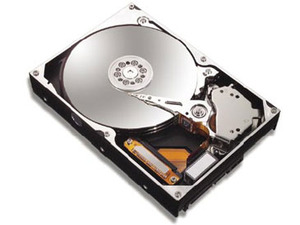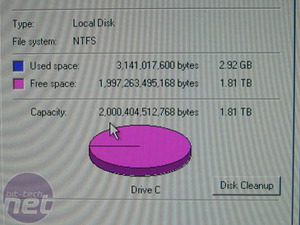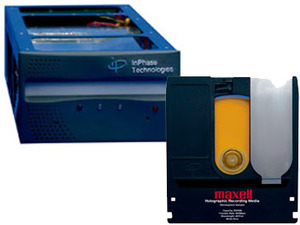
Storage
In the spring of 1983, IBM release its PC/XT, the company’s first personal computer with an interior hard disk. The disk served as a built-in storage device and held 10 megabytes, or “megs” of information, about 10 million characters or 80 million bits. Existing customers who wanted to add these 10 megs to their original computers could, for a price. IBM offered a US$3000 kit, complete with separate power supply, to expand the computer’s storage. That’s US$300 per megabyte.Today, thanks to the exponential growth described by Moore’s Law, personal-computer hard drives that can hold 1.2 gigabytes – 1.2 billion characters of information – are priced at US$250. That’s 21 cents per megabyte!
There is certainly no faulting Gates when he claimed that digital storage "is fantastically inexpensive". The only difference is that he was getting excited about 1.2GB hard drives like the classic Quantum Fireball that these days, ironically, are barely enough to contain a typical Windows XP installation.
A decade ago, the cost of storage equated to US$0.21 per megabyte, and Gates predicted that it would "soon cost about US$0.15 for a megabyte of information". Let's examine those figures. Using his forecasts, Gates expected to still pay US$180 for his 1.2GB hard drive, or get over 1.6GB for the same US$250 investment.
Boy, have things moved on. And then some!
A quick scan of Newegg.com reveals that hard drive prices have dropped as low as 40 cents per gigabyte, meaning you can now pick up a whopping 300GB for just US$120. At 1995 prices, this Maxtor Diamondmax would cost US$63,000, or in other words, Bill's US$250 would buy him 600GB today - a 500-fold increase.


(left) Maxtor Diamondmax 10 - 300GB for just $100. (right) Seagate showing off a 2TB desktop system using four 500GB Barracudas
If you throw DVD media into the mix, things are equally crazy. Bought in bulk, you can buy a 4.7GB DVD-R disk for just 30 cents. On a single 12cm disk you can store more than four times the capacity of the Quantum Fireball, for less than one eight-hundreth of the price. Optical media is so cheap that it has been regarded as 'disposable' for some time now. Burn some data, transfer it to another machine and then bin the disk - a habit that would blow people's minds back in 1995, when the 650MB CD-ROM was only just taking hold.
Of course, nobody could have been expected to accurately predict the rampant progress of storage technologies over the past ten years. Indeed, if you travelled back in time and told a group of average geeks that, in 2006, it was quite easy to build a home computer with one terabyte of storage using just US$400 worth of hard drives, you would be laughed out of the room. The world was just getting used to switching from 'megs' to 'gigs' and you were already talking about terabytes? 'What could you possibly need all that space for?' they would ask.
This exercise is just as futile today. Try it.
"In ten years, my desktop machine will have a 150TB hard drive that only cost me a hundred bucks."
Even though that only assumes the same rate of progress as the last decade, it still seems quite insane. And as every generation of nay-sayer has asked over the years, just what would you possibly need 150 terabytes worth of storage for? According to Ted Holmes, that is the size of the entire Web as indexed by Google on Dec 8th 2005 (excluding databases).
Of course, so far we have only looked at magnetic and regular optical storage. What about Holographic storage? This was already on Gates' radar as far back as 1995:
Please state the nature of the medical emergency
We look toward an exotic improvement called holographic memory, which can hold terabytes of characters in less than a cubic inch of volume. Which such capability, a holographic memory the size of your fist could hold the contents of the Library of Congress.Here we are, ten years later, and holographic storage is arguably still vapourware - all promises and no delivery. At at this year's Consumer Electronics Show, InPhase Technologies made lots of noise about being the first to commercialise holographic storage. Its initial target market will be "professional archive applications" which presumably does not include backing up one's MP3 collection.


InPhase Technologies and Maxell have teamed up to produce a 300GB holographic storage disk

MSI MPG Velox 100R Chassis Review
October 14 2021 | 15:04







Want to comment? Please log in.